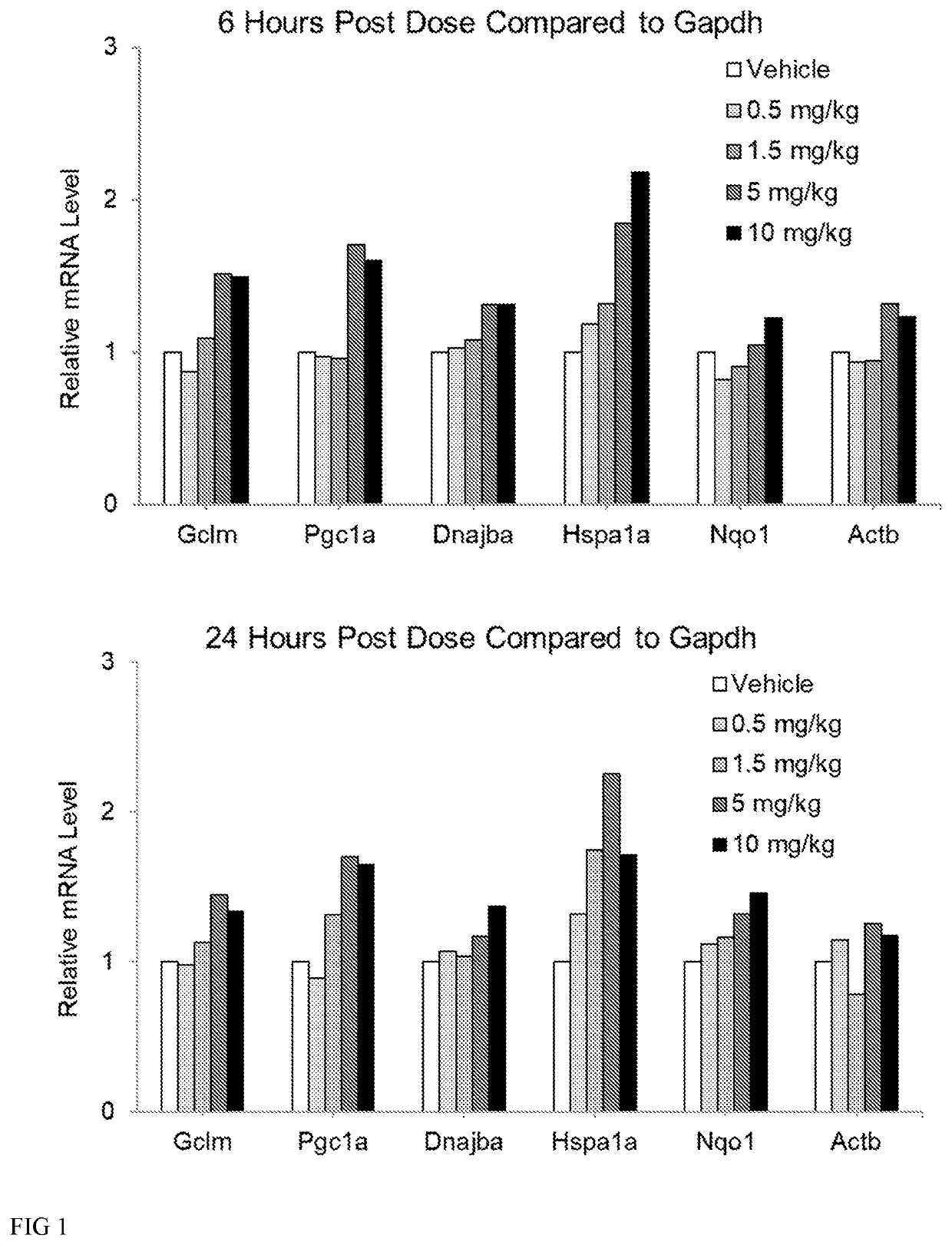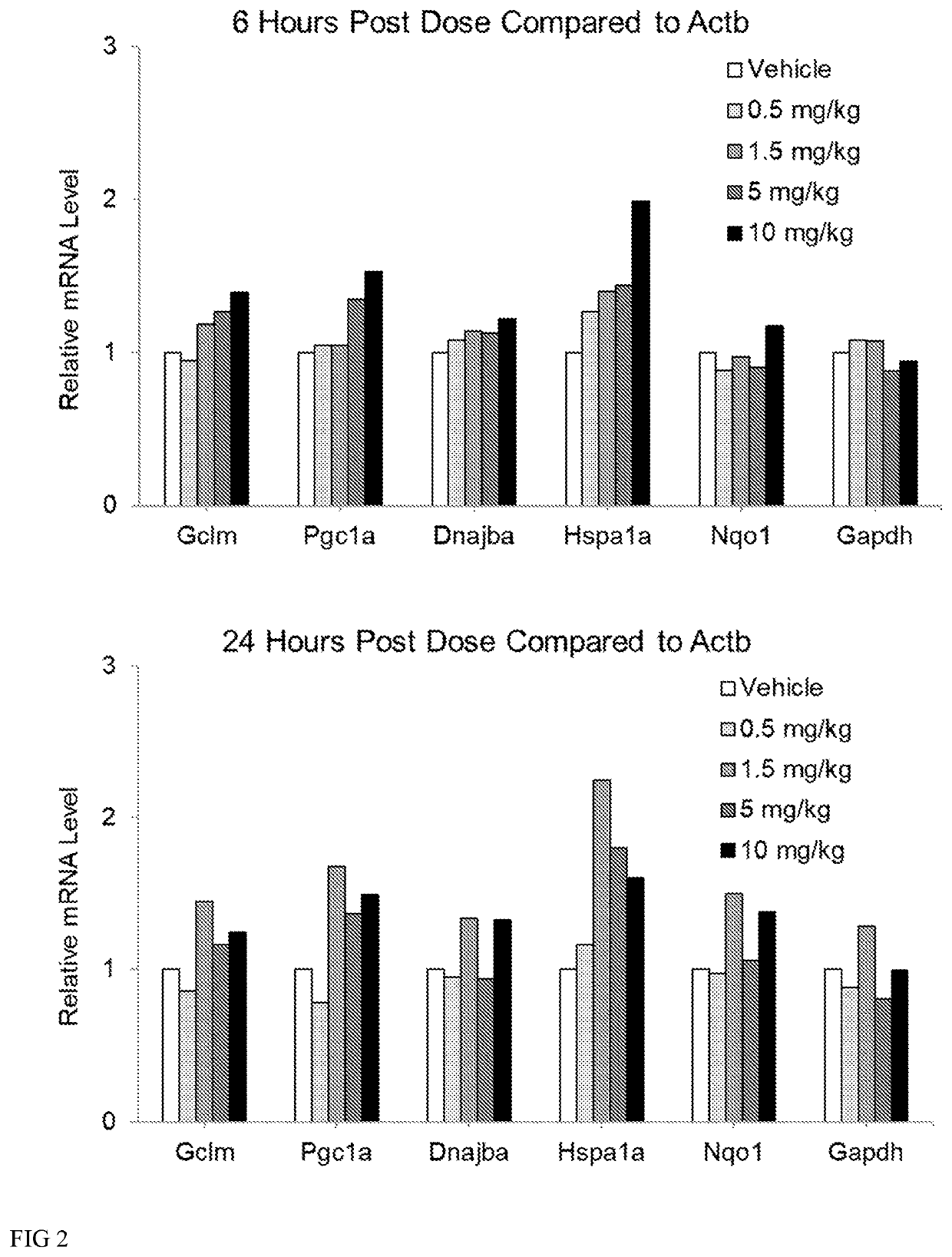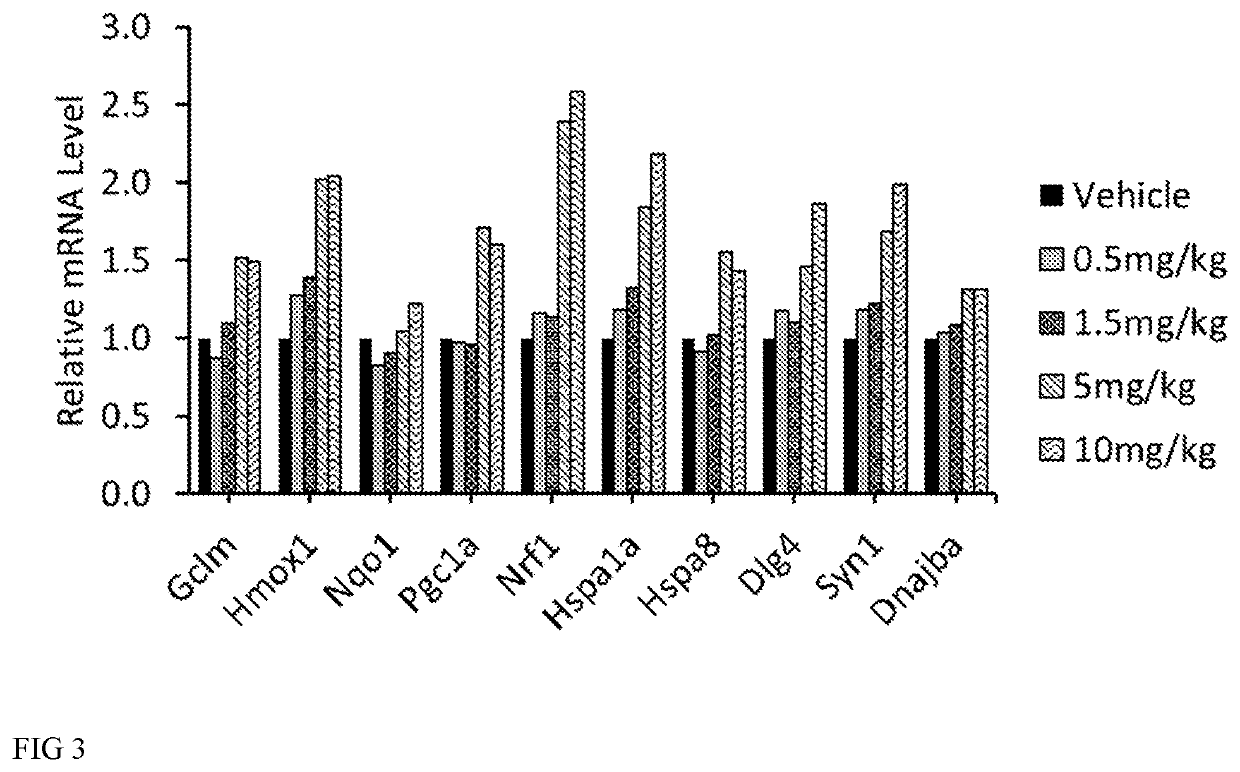Treatment of neurological disease
a neurological disease and treatment technology, applied in the field of therapeutic agents, can solve the problems of increased oxidative phosphorylation, thermogenesis and energy expenditure,
- Summary
- Abstract
- Description
- Claims
- Application Information
AI Technical Summary
Benefits of technology
Problems solved by technology
Method used
Image
Examples
example 1
harmacodynamic Study Via Subcutaneous Dosing
[0180]Methodology
[0181]Wildtype mice (3 per group) were dosed subcutaneously at 0, 0.5, 1.5, 5 and 10 mg / kg (6aS)-6-methyl-5,6,6a,7-tetrahydro-4H-dibenzo[de,g]quinoline-10,11-diol hydrochloride for 7 days once daily. One animal in the 10 mg / kg dosing group was actually dosed 15 mg / kg on Day 1. To prepare the dosing solutions, (6aS)-6-methyl-5,6,6a,7-tetrahydro-4H-dibenzo[de,g]quinoline-10,11-diol was pre-weighed into bijous and stored in foil. Each dose was made up fresh daily with filter sterilized vehicle (0.9% (w / v) saline, 0.05% (w / v) sodium metabisulfite, and 1% (w / v) ascorbic acid, at pH 3.5. Tissues were collected at expected peak mRNA expression (6 hours post final dose) and expected trough expression (24 hours post final dose). During tissue collection, spinal cord and cortex were collected from each animal. RNA was extracted immediately using Rneasy® lipid tissue mini kit. RNA was treated with DNase and converted to cDNA. Measure...
example 2
harmacodynamic Study Via Subcutaneous Dosing
[0188]Methodology
[0189]Wildtype mice (3 per group) were dosed subcutaneously at 0, 0.5, 1.5, 5 and 10 mg / kg (6aS)-6-methyl-5,6,6a,7-tetrahydro-4H-dibenzo[de,g]quinoline-10,11-diol hydrochloride for 7 days once daily. One animal in the 10 mg / kg dosing group was actually dosed 15 mg / kg on Day 1. To prepare the dosing solutions, (6aS)-6-methyl-5,6,6a,7-tetrahydro-4H-dibenzo[de,g]quinoline-10,11-diol was pre-weighed into bijous and stored in foil. Each dose was made up fresh daily with filter sterilized vehicle (0.9% (w / v) saline, 0.05% (w / v) sodium metabisulfite, and 1% (w / v) ascorbic acid, at pH 3.5. Tissues were collected at expected peak mRNA expression (6 hours post final dose) and expected trough expression (24 hours post final dose). During tissue collection, spinal cord and cortex were collected from each animal. RNA was extracted immediately using Rneasy® lipid tissue mini kit. RNA was treated with DNase and converted to cDNA. Measure...
example 3
harmacodynamic Study Via Oral Dosing
[0198]In Vivo Study and Tissue Processing
[0199]Wildtype mice were dosed orally at 25 mg / kg (6aS)-6-methyl-5,6,6a,7-tetrahydro-4H-dibenzo[de,g]quinoline-10,11-diol for 4 days once daily.
[0200]A total of 36 mice were randomly divided into twelve groups. Each group had 3 mice. After oral administration of (6aS)-6-methyl-5,6,6a,7-tetrahydro-4H-dibenzo[de,g]quinoline-10,11-diol once a day for 4 consecutive days, brains of mice in each group were sampled individually at the time point of 0, 5, 15, 30 min, 1, 2, 3, 4, 8, 12, 24 and 48 hour post the last oral dose. A quarter of whole brain from each mouse in every time group underwent a real-time quantitative polymerase chain reaction (RT-qPCR) analysis. Before RNA extraction, brain tissues were frozen immediately in liquid nitrogen, and were transferred to −80° C. until further use.
[0201]RT-qPCR
[0202]Total RNA from 36 frozen brain samples were extracted using Trizol reagent (Invitrogen, Carlsbad, Calif.,...
PUM
| Property | Measurement | Unit |
|---|---|---|
| time | aaaaa | aaaaa |
| time | aaaaa | aaaaa |
| total volume | aaaaa | aaaaa |
Abstract
Description
Claims
Application Information
 Login to View More
Login to View More - R&D
- Intellectual Property
- Life Sciences
- Materials
- Tech Scout
- Unparalleled Data Quality
- Higher Quality Content
- 60% Fewer Hallucinations
Browse by: Latest US Patents, China's latest patents, Technical Efficacy Thesaurus, Application Domain, Technology Topic, Popular Technical Reports.
© 2025 PatSnap. All rights reserved.Legal|Privacy policy|Modern Slavery Act Transparency Statement|Sitemap|About US| Contact US: help@patsnap.com



